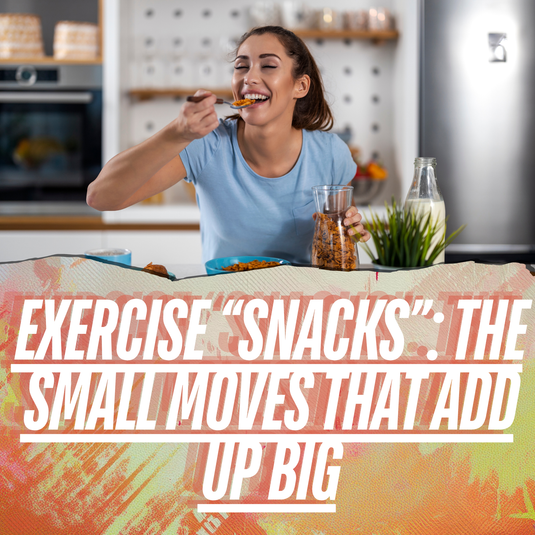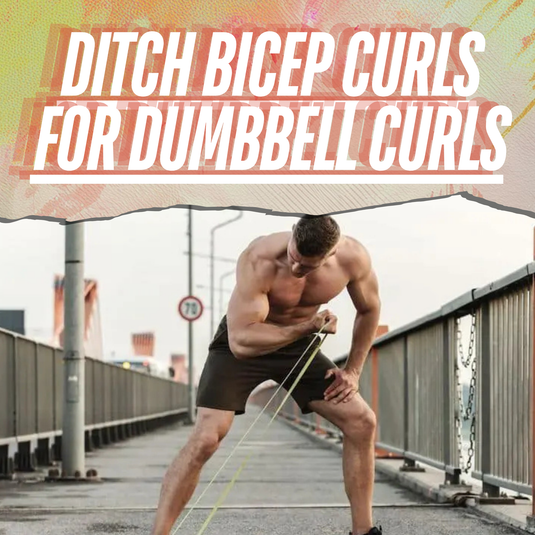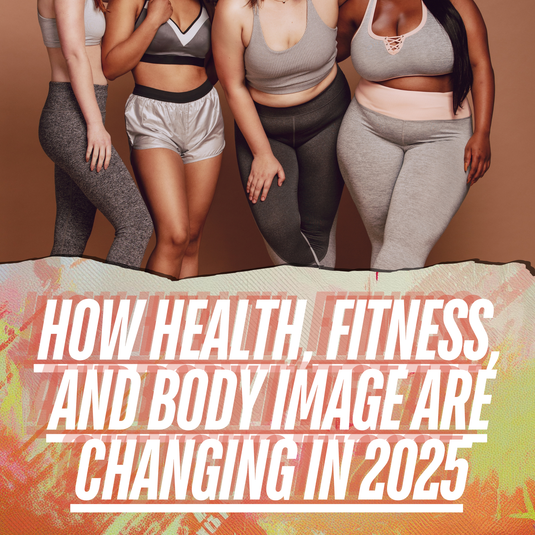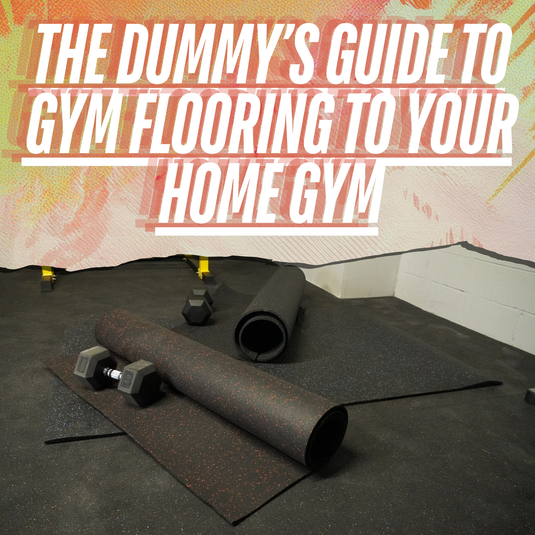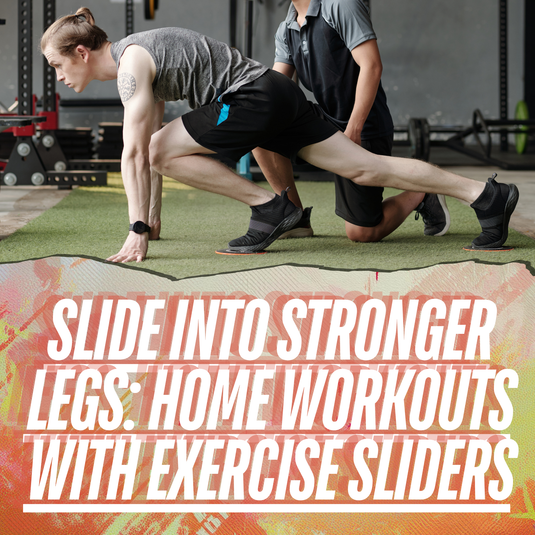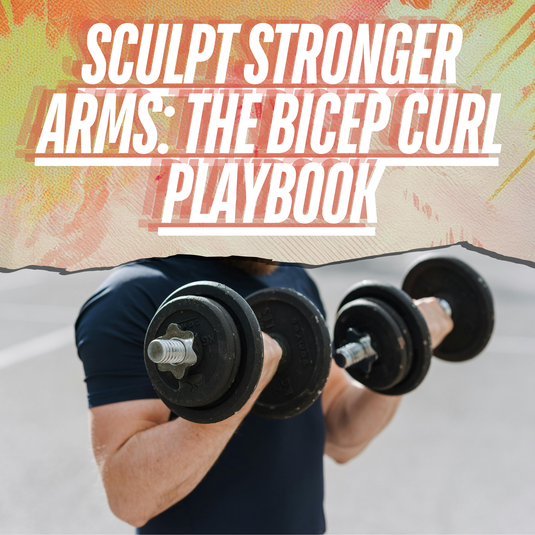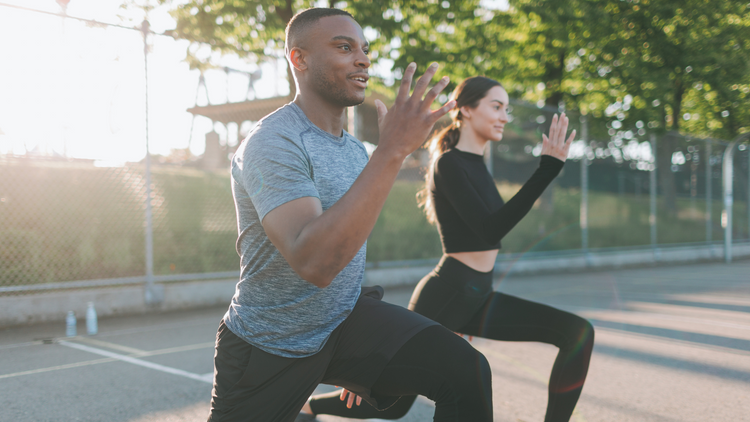44 CrossFit Workout Demos Guide
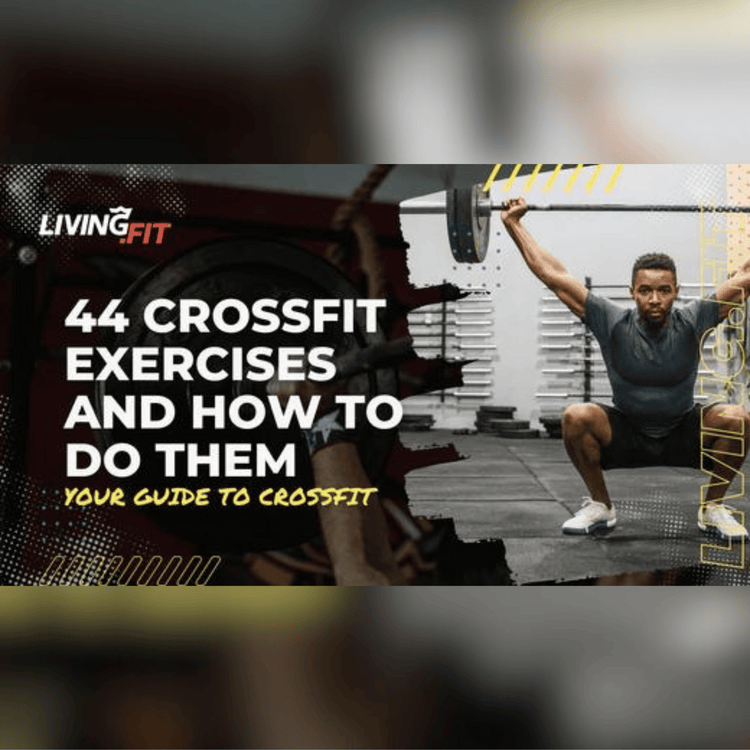
⏱️ Estimated Read Time: 6 minutes
🧠 TL;DR
- 44 CrossFit Workout Demos Guide offers effective, accessible movements for targeted results.
- This guide is designed to help you move smarter, build strength, and stay consistent.
✍️ Summary
This post explores 44 crossfit workout demos guide in a way that’s actionable and easy to follow. Whether you're new to this style of training or leveling up, it includes practical takeaways for your routine.
📚 Table of Contents
CrossFit, often hailed as the ultimate fitness regimen, has taken the world by storm in recent years due to its unparalleled effectiveness in enhancing overall fitness and well-being. This high-intensity, constantly varied workout methodology has captured the hearts of fitness enthusiasts, athletes, and newcomers alike. In this comprehensive guide, we will delve deep into the world of CrossFit workouts, exploring its history, principles, components, benefits, safety considerations, equipment, nutrition, and how it can cater to different fitness goals.
History of CrossFit
CrossFit was founded by Greg Glassman in the early 2000s. It originated as an innovative approach to fitness that challenged the conventional norms of gym workouts. Glassman's vision was to create a fitness program that was not only effective but also accessible to everyone.
Evolution of CrossFit
Over the years, CrossFit evolved into a structured fitness methodology. It combined elements of weightlifting, gymnastics, cardiovascular conditioning, and more, setting itself apart as a unique fitness program. This evolution led to the development of the CrossFit Games, an annual competition showcasing the physical prowess of CrossFit athletes from around the world.
CrossFit Games
The CrossFit Games have played a pivotal role in popularizing CrossFit. These events test the limits of athletes' fitness and have brought CrossFit to the forefront of the fitness world, inspiring countless individuals to take up the challenge.
Principles of CrossFit
Constantly Varied Workouts
CrossFit keeps workouts fresh and engaging by continually varying exercises, rep schemes, and time domains. This prevents plateaus and boredom, ensuring that participants are always challenged.
High-Intensity Functional Movements
CrossFit workouts emphasize functional movements—movements that mimic real-life actions. These exercises improve everyday activities and build a strong foundation for athletic performance. They include squats, deadlifts, push-ups, and more.
One of the defining features of CrossFit is the ability to measure and track progress. By recording workout times, weights, and repetitions, participants can easily see improvements over time, providing motivation and accountability.
Functional Fitness
CrossFit aims to make you not only stronger but also more capable in daily life. The workouts are designed to improve not just appearance but also overall functional fitness, enhancing your ability to perform everyday tasks with ease.
Want to Try Workout Programs That Burn Fat and Gain Muscle? Get Access to 40+(and counting!) Different Programs + Create Your Own With a Workout Generator! Follow on desktop or mobile!
Components of a CrossFit Workout
A typical CrossFit workout consists of three key components
Warm-up
A thorough warm-up is essential to prepare the body for the upcoming workout. It includes dynamic stretches, mobility exercises, and light cardio to increase heart rate and blood flow. A well-executed warm-up reduces the risk of injury and enhances workout performance.
Main Workout (WOD)
The Workout of the Day (WOD) is the heart of any CrossFit session. WODs come in various formats, such as AMRAP (As Many Rounds As Possible), EMOM (Every Minute on the Minute), and For Time. They incorporate a wide range of functional movements, such as burpees, pull-ups, kettlebell swings, and more. The diversity of WODs keeps the training stimulating and challenging.
Cool-down and Stretching
After the intense WOD, a cool-down period is crucial to help the body recover. This typically involves static stretching and relaxation exercises. Proper cooling down reduces muscle soreness and promotes flexibility and mobility.
Benefits of CrossFit Workouts
The benefits of CrossFit extend far beyond the physical realm
Improved Overall Fitness
CrossFit improves cardiovascular endurance, strength, flexibility, and agility, leading to well-rounded fitness.
Increased Strength and Endurance
Through regular CrossFit training, individuals experience significant gains in strength and endurance. This strength can be applied to daily activities and sports.
Weight Loss and Body Composition Change
CrossFit workouts, with their high-intensity nature, promote fat loss and muscle gain, leading to positive changes in body composition.
Community and Social Aspects
CrossFit is known for its tight-knit communities and supportive atmospheres in boxes (CrossFit gyms). The camaraderie fosters motivation and accountability.
Mental Resilience and Discipline
CrossFit challenges not only the body but also the mind. It cultivates mental toughness, discipline, and the ability to push through physical discomfort.
Safety Considerations
While CrossFit offers numerous benefits, safety should always be a priority
Proper Form and Technique
The importance of proper form cannot be overstated. Incorrect form increases the risk of injury. Seek guidance from a certified CrossFit coach to ensure you're performing movements correctly.
Scaling Workouts
CrossFit workouts can be scaled to match your fitness level. Beginners should start with lighter weights and simpler movements and gradually progress to more challenging exercises.
Avoiding Overtraining and Injuries
CrossFit encourages pushing your limits, but overtraining can lead to injuries and burnout. Listen to your body, get adequate rest, and allow for recovery.
Listening to Your Body
Pay attention to your body's signals. If something doesn't feel right or causes pain, stop and seek guidance from a coach or medical professional.
CrossFit Equipment and Gear
CrossFit workouts require specific equipment and gear
Essential Equipment
Barbells, kettlebells, dumbbells, pull-up bars, and jump ropes are commonly used in CrossFit workouts.
Proper Workout Attire and Footwear
Wear comfortable workout clothing that allows for movement. Invest in supportive athletic shoes designed for CrossFit or weightlifting.
Optional Accessories
Some individuals may choose to use accessories like gloves or weightlifting belts for added comfort and support. These are a matter of personal preference.
CrossFit Nutrition
Nutrition plays a crucial role in your CrossFit journey
Fueling for CrossFit Workouts
Consume a balanced meal or snack 1-2 hours before your CrossFit session. Focus on carbohydrates for energy and protein for muscle recovery.
Pre- and Post-Workout Nutrition
After a workout, prioritize protein intake to aid in muscle repair. Post-workout shakes or meals with lean protein sources are beneficial.
Hydration
Staying hydrated is essential. Drink water throughout the day and consider an electrolyte drink for intense workouts, especially in hot weather.
Dietary Considerations
Depending on your goals, you may need to adjust your diet. Consult with a nutritionist or dietitian for personalized guidance.
CrossFit for Different Fitness Goals
CrossFit can be tailored to various fitness objectives
Weight Loss and Fat Burning
High-intensity CrossFit workouts promote calorie burning and fat loss. Pair them with a balanced diet for effective weight management.
Muscle Building and Hypertrophy
CrossFit workouts can be adapted to include strength-focused exercises and higher-repetition schemes to promote muscle growth.
Sports-Specific Training
Many athletes use CrossFit to improve their athletic performance. Customized CrossFit programs can target specific sport-related skills and fitness components.
CrossFit for Older Adults and Special Populations
CrossFit is inclusive, and programs can be adapted to suit the needs of older adults, pregnant women, or individuals with special conditions. Consult with a CrossFit coach experienced in working with these populations.
Getting Started with CrossFit
To embark on your CrossFit journey, follow these steps
Finding a CrossFit Gym (Box)
Search for a reputable CrossFit gym (commonly referred to as a "box") in your area. Visit potential boxes, meet coaches, and observe classes to find the right fit.
Hiring a CrossFit Coach
A certified CrossFit coach can provide personalized guidance, ensuring that you learn proper techniques and scale workouts appropriately.
Understanding CrossFit Terminology and Culture
CrossFit has its own jargon and culture. Familiarize yourself with terms like "WOD," "box," and "Rx." Embrace the supportive CrossFit community and ethos.
CrossFit Myths and Misconceptions
There are several myths associated with CrossFit
Addressing Common Misconceptions
CrossFit has faced criticism regarding safety and intensity. However, with proper coaching and adherence to safety guidelines, it can be a safe and effective fitness program.
Debunking Myths with Scientific Evidence
Research supports the effectiveness of CrossFit in improving fitness markers like cardiovascular endurance and strength. When performed correctly, it is a valuable fitness tool.
Success Stories and Testimonials Real-life examples of individuals who have benefited from CrossFit can be truly inspiring. Many have experienced transformations in their fitness, health, and overall quality of life. These success stories serve as testaments to the power of CrossFit when approached with dedication and consistency.
CrossFit offers a holistic approach to fitness that challenges both the body and mind. Its constantly varied workouts, emphasis on functional movements, and supportive communities have made it a standout fitness program. Whether you're aiming for weight loss, muscle gain, improved athletic performance, or simply a more active and healthier lifestyle, CrossFit can be adapted to meet your needs. Remember to prioritize safety, seek professional guidance, and embrace the journey toward better fitness and well-being.
Want to Try Workout Programs That Burn Fat and Gain Muscle? Get Access to 40+(and counting!) Different Programs + Create Your Own With a Workout Generator! Follow on desktop or mobile!
CrossFit Workouts to Try at Home
When you can't make it to your local CrossFit box, these home-based CrossFit workouts offer a fantastic alternative. Each workout is designed to challenge your fitness levels, promote functional strength, and provide a full-body workout. Here are five CrossFit workouts to get you started
1. Air Squats
Benefits
Air squats are an excellent bodyweight exercise for building leg strength, improving mobility, and enhancing overall lower-body endurance.
Muscles Worked
Quadriceps, hamstrings, glutes, and calves.
How to Do It
-
Stand with feet shoulder-width apart.
-
Lower your body by bending your knees and pushing your hips back, keeping your chest up.
-
Go as low as your mobility allows while maintaining balance.
-
Push through your heels to return to the starting position. Variations: Try pistol squats (single-leg squats) or add weight with a dumbbell or kettlebell.
2. Push-Ups
Benefits
Push-ups are a classic upper-body strength builder that also engage your core.
Muscles Worked
Chest, shoulders, triceps, and core.
How to Do It
-
Start in a plank position with hands slightly wider than shoulder-width apart.
-
Lower your body until your chest is close to the ground, keeping your body in a straight line.
-
Push back up to the starting position.
Variations
Modify with knee push-ups or elevate your hands on an object for incline push-ups.
3. Burpees
Benefits
Burpees are a full-body exercise that elevates your heart rate, improving cardiovascular endurance and agility.
Muscles Worked
Chest, shoulders, triceps, back, quads, hamstrings, and calves.
How to Do It
-
Begin in a standing position.
-
Drop into a squat and place your hands on the ground.
-
Kick your feet back into a plank position.
-
Perform a push-up.
-
Jump your feet back to the squat position.
-
Explode upward into a jump.
Variations
Try step-back burpees or add a tuck jump at the end for extra intensity.
4. Plank
Benefits
Planks are essential for core stability, promoting good posture, and preventing lower back pain.
Muscles Worked:
Core muscles, including the rectus abdominis and transverse abdominis.
How to Do It
-
Start in a push-up position, but with your weight on your forearms instead of your hands.
-
Keep your body in a straight line from head to heels.
-
Hold the position, engaging your core muscles.
Plank Variations
Try side planks or add leg lifts for additional challenges.
5. Jump Rope
Benefits
Jumping rope is an effective cardiovascular exercise that also improves coordination and leg strength.
Muscles Worked
Calves, quadriceps, hamstrings, and shoulders.
How to Do It
-
Hold the jump rope handles in each hand.
-
Jump over the rope as it passes under your feet.
-
Land softly on the balls of your feet.
-
Maintain a steady rhythm.
Variations
Experiment with double unders (two rotations of the rope per jump) or alternate foot jumps.
6. Lunges
Benefits
Lunges are fantastic for building leg strength, improving balance, and enhancing lower-body mobility.
Muscles Worked
Quadriceps, hamstrings, glutes, and calves.
How to Do It
-
Stand with feet hip-width apart.
-
Take a step forward with one leg, bending both knees until they form 90-degree angles.
-
Push off your front foot to return to the starting position.
-
Repeat on the other leg.
Variations
Add weight with dumbbells or perform walking lunges to increase the challenge.
7.Sit-Ups
Benefits
Sit-ups are a core-strengthening exercise that helps improve abdominal strength and endurance.
Muscles Worked
Rectus abdominis (front of the abdomen) and hip flexors.
How to Do It
-
Lie on your back with knees bent and feet flat on the floor.
-
Cross your arms over your chest or place your hands behind your head.
-
Lift your upper body off the ground, engaging your core.
-
Lower your upper body back down.
Variations
Try butterfly sit-ups or add a medicine ball for added resistance.
8. Mountain Climbers
Benefits
Mountain climbers provide a high-intensity cardiovascular workout while engaging the core and lower body.
Muscles Worked
Core, shoulders, chest, and hip flexors.
How to Do It
-
Start in a plank position with your hands directly under your shoulders.
-
Alternate bringing your knees in towards your chest, one at a time, in a running motion.
-
Keep your core engaged and maintain a fast pace.
Variations
Experiment with cross-body mountain climbers or slow down the pace for a modified version.
9. Box Jumps
Benefits
Box jumps are a plyometric exercise that enhances explosive power, lower-body strength, and coordination.
Muscles Worked
Quadriceps, hamstrings, glutes, and calves.
How to Do It
-
Stand in front of a sturdy box or platform.
-
Bend your knees and swing your arms back.
-
Explosively jump onto the box, landing softly with both feet.
-
Stand upright on the box before stepping back down.
Variations
Adjust the box height for different levels of difficulty or try step-ups for a lower-impact option.
10. Bicycle Crunches
Benefits
Bicycle crunches are an effective exercise for targeting the oblique muscles and improving core strength and definition.
Muscles Worked
Rectus abdominis (front of the abdomen), obliques, and hip flexors.
How to Do It
-
Lie on your back with hands behind your head and legs lifted off the ground.
-
Bring one knee towards your chest while simultaneously twisting your upper body to bring the opposite elbow toward the knee.
-
Alternate sides in a pedaling motion.
Variations
Increase intensity by extending the legs further from the ground or slowing down the movement for a greater focus on muscle engagement.
11. Push Press
Benefits
The push press is a compound movement that builds upper-body and shoulder strength while also engaging the core.
Muscles Worked
Shoulders (deltoids), triceps, chest, and core.
How to Do It
-
Begin with a barbell or dumbbells resting on your shoulders.
-
Bend your knees slightly and explosively push the weight overhead by straightening your legs.
-
Lower the weight back to your shoulders.
Variations
Use a variety of equipment, such as kettlebells or resistance bands, and vary the weight to adjust the intensity.
12. Wall Balls
Benefits
Wall balls combine squatting and throwing, making them an excellent exercise for leg and core strength, cardiovascular fitness, and coordination.
Muscles Worked
Quadriceps, hamstrings, glutes, core, shoulders, and upper back.
How to Do It
-
Stand facing a wall with a medicine ball.
-
Perform a squat, and as you rise, explosively throw the ball against the wall.
-
Catch the ball and repeat the movement.
Variations
Adjust the weight of the medicine ball or the target height on the wall for different challenges.
13. Handstand Push-Ups
Benefits
Handstand push-ups develop upper body strength, particularly in the shoulders and triceps, while also enhancing balance and coordination.
Muscles Worked
Shoulders (deltoids), triceps, upper chest, and core.
How to Do It
-
Start in a handstand position with your heels against a wall.
-
Lower your head toward the ground by bending your elbows.
-
Push back up to the starting position.
Variations
Scale the movement with pike push-ups or use wall-assisted handstand push-ups.
Want to Try Workout Programs That Burn Fat and Gain Muscle? Get Access to 40+(and counting!) Different Programs + Create Your Own With a Workout Generator! Follow on desktop or mobile!
14. Dumbbell Thrusters
Benefits
Dumbbell thrusters are a powerful full-body exercise that enhances strength, power, and cardiovascular fitness.
Muscles Worked
Quadriceps, hamstrings, glutes, shoulders, triceps, and core.
How to Do It
-
Hold a dumbbell in each hand at shoulder height.
-
Perform a squat and, as you rise, press the dumbbells overhead.
-
Lower the dumbbells back to shoulder height.
Variations
Adjust the weight of the dumbbells and experiment with different rep schemes.
15. Russian Kettlebell Swings
Benefits
Kettlebell swings are a dynamic exercise that strengthens the posterior chain (back, glutes, and hamstrings) while also improving cardiovascular fitness and grip strength.
Muscles Worked
Glutes, hamstrings, lower back, core, and shoulders.
How to Do It
-
Stand with your feet shoulder-width apart, holding a kettlebell with both hands between your legs.
-
Bend your knees slightly and hinge at the hips.
-
Swing the kettlebell up to shoulder height by driving your hips forward.
-
Allow the kettlebell to swing back between your legs, and repeat.
Variations
Experiment with different kettlebell weights and swing styles, such as American swings (swinging the kettlebell overhead)
16. Box Step-Ups
Benefits
Box step-ups are excellent for building leg strength and stability while also engaging your core and enhancing cardiovascular endurance.
Muscles Worked
Quadriceps, hamstrings, glutes, calves, and core.
How to Do It
-
Stand facing a sturdy box or platform.
-
Step one foot onto the box and push through your heel to stand upright.
-
Step back down with the same foot and repeat with the opposite foot.
Variations
Adjust the height of the box or add dumbbells for added resistance.
17. Pull-Ups
Benefits
Pull-ups are a challenging upper-body exercise that strengthens your back, arms, and grip while also engaging your core.
Muscles Worked
Latissimus dorsi (lats), biceps, shoulders, and upper back.
How to Do It
-
Hang from a pull-up bar with your palms facing away from you.
-
Pull your body upward until your chin is above the bar.
-
Lower your body back to the starting position.
Variations
Use an assisted pull-up machine or resistance bands for assistance if needed.
18. Double-Unders
Benefits
Double-unders, where the jump rope passes under your feet twice per jump, improve cardiovascular fitness, coordination, and calf strength.
Muscles Worked
Calves, quadriceps, hamstrings, shoulders, and grip.
How to Do It
-
Hold a jump rope with both hands.
-
Swing the rope over your head and jump while rotating the rope twice under your feet before landing.
-
Maintain a fast and consistent rhythm.
Variations
Practice single unders (one rotation of the rope per jump) to build coordination before attempting double-unders.
19. Hollow Rocks
Benefits
Hollow rocks are an excellent core exercise that promotes abdominal strength and stability.
Muscles Worked
Rectus abdominis (front of the abdomen) and lower back.
How to Do It
-
Lie on your back with arms extended overhead and legs straight.
-
Lift your head, shoulders, arms, and legs off the ground.
-
Rock back and forth while keeping your lower back pressed into the floor.
Variations
Modify by tucking your knees or ankles closer to your chest if needed.
20. Push-Up Variations
Benefits
Push-up variations add diversity to your upper body workouts, targeting different muscle groups and providing various challenges.
Muscles Worked
Depending on the variation, push-ups target the chest, shoulders, triceps, and core.
How to Do It
Variations
Perform any of the following variations
-
Diamond push-ups (hands close together),
-
Wide-grip push-ups (hands wider apart),
-
Staggered push-ups (one hand higher than the other).
Explore other push-up variations, such as archer push-ups or decline push-ups.
21. Dumbbell Snatches
Benefits
Dumbbell snatches are a dynamic, full-body exercise that enhances strength, power, and coordination.
Muscles Worked
Shoulders, upper back, glutes, hamstrings, and core.
How to Do It
-
Stand with a dumbbell between your feet.
-
Bend your knees and hinge at the hips to grasp the dumbbell with one hand.
-
Explosively lift the dumbbell overhead while extending your hips and knees.
-
Lower the dumbbell back to the ground and switch hands for the next repetition.
Variations
Adjust the weight of the dumbbell or perform alternating snatches.
22. Box Dips
Benefits
Box dips are an effective exercise for building upper-body strength and targeting the triceps and shoulders.
Muscles Worked
Triceps, chest, shoulders, and upper back.
How to Do It
-
Place your hands on the edge of a sturdy box or platform, fingers pointing forward.
-
Extend your legs in front of you or keep them bent for a modified version.
-
Lower your body by bending your elbows until your upper arms are parallel to the ground.
-
Push through your palms to return to the starting position.
Variations
Adjust the height of the box or add weight to increase the challenge.
23. Bear Crawls
Benefits
Bear crawls are a full-body exercise that enhances coordination, stability, and overall muscular endurance.
Muscles Worked
Shoulders, chest, triceps, core, quadriceps, and hamstrings.
How to Do It
-
Start in a tabletop position with your wrists under your shoulders and knees under your hips.
-
Lift your knees slightly off the ground and crawl forward by moving your opposite hand and foot simultaneously.
-
Maintain a tight core and continue crawling for a set distance or time.
Variations
Increase the speed or crawl backward for added challenge.
24. Bent-Over Rows
Benefits
Bent-over rows strengthen the upper back and improve posture while also targeting the biceps and shoulders.
Muscles Worked
Upper back (rhomboids and traps), biceps, and shoulders.
How to Do It
-
Hold a dumbbell in each hand with palms facing your thighs.
-
Bend at the hips and knees, keeping your back straight, until your torso is parallel to the ground.
-
Pull the dumbbells toward your hips, squeezing your shoulder blades together.
-
Lower the dumbbells back down with control.
Variations
Adjust the weight of the dumbbells or use a barbell for bent-over rows.
25. Lateral Jumps
Benefits
Lateral jumps are a plyometric exercise that improves lateral explosiveness, coordination, and lower-body strength.
Muscles Worked
Quadriceps, hamstrings, glutes, calves, and hip abductors.
How to Do It
-
Stand next to a line or marker.
-
Jump laterally over the line, landing softly on the opposite side.
-
Quickly jump back to the starting side and continue alternating.
Variations
Increase the distance or use an obstacle for more challenge.
26. Single-Leg Deadlifts
Benefits
Single-leg deadlifts enhance balance, stability, and lower-body strength while also targeting the hamstrings and glutes.
Muscles Worked
Hamstrings, glutes, lower back, and core.
How to Do It
-
Hold a dumbbell or kettlebell in one hand.
-
Stand on one leg with a slight bend in the knee.
-
Hinge at your hips to lower the weight toward the ground while extending your free leg behind you for balance.
-
Return to the upright position and repeat.
Variations
Adjust the weight or try the exercise with your eyes closed for an extra balance challenge.
27. Sit-Up to Stand-Up
Benefits
This dynamic movement enhances core strength and functional fitness by transitioning from a seated position to standing.
Muscles Worked
Core, hip flexors, quadriceps, and glutes.
How to Do It
-
Begin in a seated position with your knees bent, feet flat on the ground, and arms extended overhead.
-
Perform a sit-up to come to a standing position without using your hands for assistance.
-
Return to the seated position and repeat.
Variations:
Modify by using your hands for support during the sit-up phase or add weight for resistance.
28. Tire Flips (or Sandbag Flips)
Benefits
If you have access to a tire or sandbag, flipping it provides a whole-body workout, improving strength, power, and conditioning.
Muscles Worked
Legs, back, shoulders, core, and grip strength.
How to Do It
-
Position yourself next to the tire or sandbag.
-
Squat down, lift the object, and flip it over by driving your hips and legs.
-
Repeat for a specified number of flips or a set distance.
Variations
Adjust the size and weight of the tire or sandbag for different levels of difficulty.
29. Wall Walks
Benefits
Wall walks are a challenging exercise that enhances shoulder strength, stability, and mobility.
Muscles Worked
Shoulders, chest, triceps, and core.
How to Do It
-
Begin in a push-up position with your feet against a wall.
-
Slowly walk your hands toward the wall while walking your feet up the wall.
-
Continue walking until you are in an inverted position.
-
Reverse the movement to return to the push-up position.
Variations
Modify by walking only partway up the wall or using an incline for support.
30. Sled Drags
Benefits
If you have access to a sled, sled drags are an excellent way to build lower-body strength, improve cardiovascular fitness, and work on explosive power.
Muscles Worked
Quadriceps, hamstrings, glutes, calves, and upper back.
How to Do It
-
Attach a harness to your body and connect it to the sled.
-
Walk or run while dragging the sled behind you.
-
Focus on maintaining good posture and a strong stride.
Variations
Increase the weight on the sled or vary the distance and terrain for added challenge.
31. Push Press
Benefits
Push presses are a powerful exercise for building upper body and shoulder strength while also engaging the core.
Muscles Worked
Shoulders (deltoids), triceps, chest, and core.
How to Do It
-
Begin with a barbell or dumbbells resting on your shoulders.
-
Bend your knees slightly and explosively push the weight overhead by straightening your legs.
-
Lower the weight back to your shoulders.
Variations
Adjust the weight of the barbell or dumbbells to vary the intensity
Want to Try Workout Programs That Burn Fat and Gain Muscle? Get Access to 40+(and counting!) Different Programs + Create Your Own With a Workout Generator! Follow on desktop or mobile!
32. L-Sit
Benefits
L-sits are a challenging core exercise that targets the abs, hip flexors, and upper body while also improving balance and stability.
Muscles Worked
Abdominals, hip flexors, shoulders, and triceps.
How to Do It
-
Sit on the ground with your legs straight and your hands placed on the ground beside your hips.
-
Lift your hips off the ground and straighten your legs, forming an "L" shape with your body.
-
Hold this position for as long as you can while keeping your core engaged.
Modify by bending your knees or using parallel bars for support.
33. Kettlebell Goblet Squats
Benefits
Goblet squats are excellent for building leg strength, improving mobility, and engaging the core.
Muscles Worked
Quadriceps, hamstrings, glutes, core, and shoulders.
How to Do It
-
Hold a kettlebell close to your chest with both hands.
-
Stand with your feet shoulder-width apart.
-
Perform a squat by lowering your body while keeping the kettlebell close to your chest.
-
Return to the starting position by straightening your legs.
Variations
Adjust the weight of the kettlebell or try single-leg goblet squats for added difficulty.
34. Push-Up to Renegade Row
Benefits
This compound movement combines push-ups and renegade rows to enhance upper body strength, core stability, and coordination.
Muscles Worked
Chest, shoulders, back, triceps, and core.
How to Do It
-
Begin in a push-up position with a dumbbell in each hand.
-
Perform a push-up.
-
After returning to the top of the push-up, row one dumbbell up to your hip while balancing on the other hand.
-
Alternate rows between each hand.
Variations
Adjust the weight of the dumbbells or increase the number of repetitions.
35. Jumping Lunges
Benefits
Jumping lunges are a high-intensity exercise that improves lower body strength, balance, and cardiovascular fitness.
Muscles Worked
Quadriceps, hamstrings, glutes, and calves.
How to Do It
-
Start in a lunge position with one foot forward and one foot back.
-
Lower your body into a lunge, then explosively jump up and switch your leg positions in mid-air.
-
Land softly and immediately go into the next lunge.
Variations
Adjust the intensity by increasing or decreasing the speed and height of the jump.
36. Man-Makers
Benefits
Man-Makers are a full-body exercise that combines elements of a push-up, renegade rows, and a thruster, making it a highly efficient and challenging workout.
Muscles Worked
Chest, shoulders, back, triceps, biceps, legs, and core.
How to Do It
-
Begin with a pair of dumbbells in a push-up position.
-
Perform a push-up, then row one dumbbell in each hand.
-
Push off the ground and jump your feet forward, transitioning into a squat.
-
Explosively stand up while pressing the dumbbells overhead.
-
Return to the starting position and repeat.
Variations
Adjust the weight of the dumbbells and the number of repetitions to suit your fitness level.
37. Russian Twists
Benefits
Russian twists are an effective core exercise that targets the obliques while also improving balance and stability.
Muscles Worked
Obliques, rectus abdominis (front of the abdomen), and lower back.
How to Do It
-
Sit on the ground with your knees bent and your feet elevated.
-
Lean back slightly, keeping your back straight, and hold a dumbbell or medicine ball in front of you.
-
Rotate your torso to one side, bringing the weight beside your hip.
-
Return to the center and repeat on the other side.
Variations
Increase the weight or elevate your feet higher for added challenge.
38. Single-Arm Kettlebell Swings
Benefits
Single-arm kettlebell swings enhance hip and core strength, as well as cardiovascular fitness, while focusing on one side of the body at a time.
Muscles Worked
Glutes, hamstrings, lower back, core, and shoulders.
How to Do It
-
Stand with your feet shoulder-width apart, holding a kettlebell with one hand.
-
Hinge at the hips and swing the kettlebell between your legs.
-
Drive your hips forward to swing the kettlebell to shoulder height.
-
Lower the kettlebell back between your legs and repeat.
Variations
Adjust the weight of the kettlebell and alternate between arms.
39. Wall Ball Shots
Benefits
Wall ball shots are a high-intensity exercise that combines squatting and throwing to improve leg strength, cardiovascular endurance, and overall power.
Muscles Worked
Quadriceps, hamstrings, glutes, shoulders, and upper back.
How to Do It
-
Stand facing a wall with a medicine ball.
-
Perform a squat, and as you rise, explosively throw the ball against the wall.
-
Catch the ball and repeat the movement.
Variations:
Adjust the weight of the medicine ball or the target height on the wall for different challenges.
40. Hanging Leg Raises
Benefits
Hanging leg raises are a highly effective exercise for targeting the lower abdominal muscles and improving core strength.
Muscles Worked
Lower abdominals, hip flexors, and grip strength.
How to Do It
-
Hang from a pull-up bar with your arms fully extended.
-
Raise your legs while keeping them straight, aiming to lift them as high as possible.
-
Lower your legs back down with control.
Variations
Bend your knees or perform knee raises if straight leg raises are too challenging.
41. Box Jumps with Burpees
Benefits
This combination of box jumps and burpees offers a challenging full-body workout, combining explosiveness, strength, and cardiovascular fitness.
Muscles Worked
Quadriceps, hamstrings, glutes, shoulders, chest, and core.
How to Do It
-
Start with a box or platform in front of you.
-
Perform a burpee by squatting, kicking your feet back into a plank position, doing a push-up, jumping your feet back to a squat, and exploding up into a jump.
-
As you land from the jump, immediately perform a box jump.
Variations
Adjust the height of the box or the number of repetitions to suit your fitness level.
42. Dumbbell Lunges with Twists
Benefits
Dumbbell lunges with twists add an extra challenge to traditional lunges by engaging the core and oblique muscles.
Muscles Worked
Quadriceps, hamstrings, glutes, obliques, and core.
How to Do It
-
Hold a dumbbell or weight plate close to your chest.
-
Step forward into a lunge while simultaneously twisting your torso to the side of your front leg.
-
Return to the starting position and repeat on the other side.
Variations
Adjust the weight of the dumbbell or add a hop between lunges for an extra challenge.
43. Push-Up to Pike
Benefits
This dynamic movement combines a push-up and a pike to target the chest, shoulders, and core while enhancing overall upper body strength.
Muscles Worked
Chest, shoulders, triceps, and core.
How to Do It
-
Start in a push-up position with your hands slightly wider than shoulder-width apart.
-
Perform a push-up.
-
After completing the push-up, raise your hips and push your body back into a pike position, forming an inverted "V."
-
Return to the push-up position and repeat.
Variations
Modify by performing knee push-ups or elevating your hands on an object.
44. Dumbbell Thrusters with a Twist
Benefits
Dumbbell thrusters with a twist are a challenging full-body exercise that combines a squat, overhead press, and oblique twist.
Muscles Worked
Quadriceps, hamstrings, glutes, shoulders, triceps, core, and obliques.
How to Do It
-
Hold a dumbbell in each hand at shoulder height.
-
Perform a squat, and as you rise, press the dumbbells overhead.
-
While pressing the dumbbells, twist your torso to one side.
-
Lower the dumbbells back to shoulder height and repeat on the other side.
Variations
Adjust the weight of the dumbbells or experiment with different rep schemes.
Want to Try Workout Programs That Burn Fat and Gain Muscle? Get Access to 40+(and counting!) Different Programs + Create Your Own With a Workout Generator! Follow on desktop or mobile!
Conclusion
CrossFit workouts can add extra challenges and variety to your home training routine, whether you're just starting out or an experienced athlete looking for new challenges. By integrating these workouts into your fitness regimen, you can keep progressing and work towards your fitness goals. Embrace the intensity, diversity, and sense of community that CrossFit offers, and experience the positive transformations it can bring to your life.
Helpful Resources
-
Be alerted when we publish more like this to our blog here
-
Daily workout plans here
-
Fitness Equipment like barbells and bumper plates here
-
Free bodyweight workouts here
-
Follow along with $1 video workouts here
Want more guidance? Check out our Weekly Dumbbell Workout #1.
📝 FAQs
How often should I do these exercises? +
2–3 times per week is a good starting point for most people.
Do I need equipment? +
Many of these can be done with just your bodyweight or a single kettlebell or dumbbell.
Can beginners do these routines? +
Yes! These movements are designed to scale with your fitness level.


